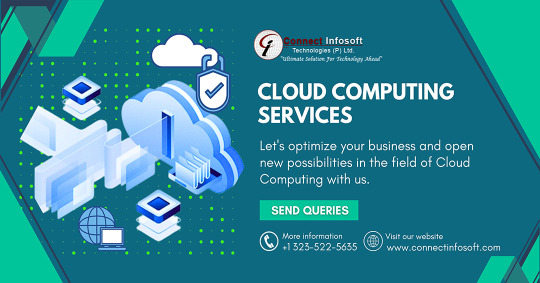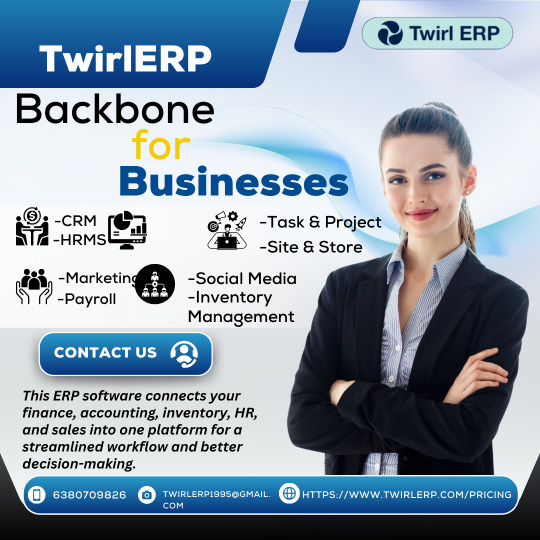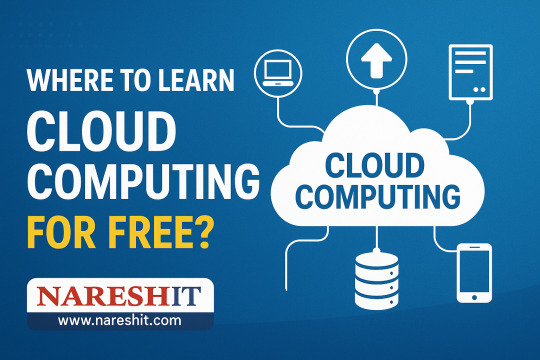#clouddeveloper
Explore tagged Tumblr posts
Text

🚀 Exciting Job Opportunity with Guidewire Masters!
We are currently hiring for the position of Guidewire Developer in collaboration with ValueMomentum.
🔹 Experience: Minimum 3 years
🔹 Location: Hyderabad, Telangana
🔹 Skills Required: Proficiency in P&C (Property & Casualty) Insurance domain and hands-on experience with Guidewire.
If you’re passionate about Guidewire and ready to take the next big step in your career, we want to hear from you!
📩 Comment "Job" if you're interested
📞 Contact: +91 9885118899
🌐 Website: www.guidewiremasters.in
#Guidewire#GuidewireDeveloper#ValueMomentum#JobOpening#HyderabadJobs#TechJobs#GuidewireMasters#CloudDeveloper#InsuranceTech#NowHiring
0 notes
Text

How to Hire a 𝐒𝐨𝐟𝐭𝐰𝐚𝐫𝐞👨💻 𝐃𝐞𝐯𝐞𝐥𝐨𝐩𝐞𝐫👩💻?
One of the most important things every firm trying to innovate has to do is Hire a Software Developer. An experienced developer can bring concepts to life. It increases the productivity of your business. It might assist you in differentiating yourself from the competitors. You may draw in and choose competent applicants.
What Is The Cost Of Hiring A 𝐒𝐨𝐟𝐭𝐰𝐚𝐫𝐞 𝐃𝐞𝐯𝐞𝐥𝐨𝐩𝐞𝐫? ▪️The monthly average Software Developer Salary is ₹26,476. ▪️Monthly salary typically varies from ₹8,000 to ₹77,000.
Continue Reading on the Blog👇
#PlacementIndia 💼#softwaredeveloper#hiring#customsoftwaresolutions#fulltimedeveloper#softwareengineer#webdeveloper#HTML#CSS#JavaScript#mobiledeveloper#gamedeveloper#clouddeveloper#recruitmentagencies#employeereferrals#industryevents#onlinecommunities#frontenddeveloper#fresher#pythondeveloper#javadeveloper#PHPdeveloper#manualtesting#reactjsdeveloper#softwaredeveloperfresher#hrsolution#recruitcandidate#skills
0 notes
Text

Cloud Computing Services by Connect Infosoft Technologies
Let's optimize your business and open new possibilities in the field of Cloud Computing with us.
#connectinfosoft#cloudcomputingservice#cloudcomputingdevelopment#clouddevelopmentcompany#cloudteam#clouddeveloper#cloudexpert#cloudtech#cloudsolutions#cloudinfrastructure#cloudstrategy#cloudcomputingconsultancy#cloudintegration#aws#devops#googlecloud#azure#cloudsecurity#clouddeployment#agilecloud#cloudautomation#cloudservices#cloudoptimization#cloudarchitecture#cloudmigration#cloudmanagement#cloudexperts#cloudsolutionsprovider#cloudinnovation#appdevelopment
1 note
·
View note
Text
Cloud Computing: An Awesome Field to Explore your Future in…!!!
Cloud Engineers and Architects are in high demand as industries across the spectrum, irrespective of the organization’s size, have started adopting cloud services in one way or another.

There are a few foresighted private Universities like Ganpat University offering industry focused programs and closely working with multi nationals like IBM to offer joint undergraduate degree engineering programs with cloud specialization since 2014.
IBM and Ganpat University have collaborated to set up an IBM Software Lab for Emerging Technologies in the campus to help students and faculty members enhance their skills in areas of Cloud Computing, Cloud Application Development – Deployment and DevOps.
0 notes
Text

Salesforce Commerce Cloud Developer Growfaster-ClousRevolute
0 notes
Text
Copilot Use Cases For Developers
Microsoft Copilot is revolutionizing the way developers interact with development tools, providing AI-powered assistance across a range of Microsoft products like Visual Studio, Azure, and GitHub. With Copilot integrated into these environments, developers can streamline workflows, automate routine tasks, and leverage advanced features for improved productivity. For example, in Visual Studio, Copilot helps write code faster by suggesting context-aware completions, refactoring code, and even generating entire functions based on brief descriptions. This drastically reduces the time spent on boilerplate code and increases efficiency, allowing developers to focus on more creative and complex aspects of their projects.
Furthermore, Microsoft Copilot empowers developers to work smarter by integrating with cloud-based services like Azure. By leveraging machine learning and AI, it can suggest optimized solutions, recommend cloud resources, and assist in troubleshooting infrastructure issues. This level of automation and intelligent support enables developers to make better decisions quickly, while reducing the cognitive load and manual effort needed to manage cloud-based applications. As Microsoft Copilot continues to evolve, it will increasingly become an indispensable tool in the developer toolkit, transforming how software is built and deployed in today’s fast-paced technological landscape.
Click Here to know more: https://www.intelegain.com/top-10-copilot-use-cases-in-2025/
#MicrosoftCopilot#AIForDevelopers#DevTools#ProductivityBoost#CodeCompletion#CloudDevelopment#VisualStudio#Azure#MachineLearning#AutomatedCoding#SoftwareDevelopment#TechInnovation#DeveloperEfficiency#AIinTech#DevOps
2 notes
·
View notes
Text

Struggling with data silos and disconnected departments? TwirlERP can be your all-in-one solution!
Twirl ERP software connects your finance, accounting, inventory, HR, and sales into one platform for a streamlined workflow and better decision-making.
4 notes
·
View notes
Text
☁️ Cloud Native from Day One
With 9+ years of experience in AWS, Azure, and GCP, SDH builds SaaS solutions for scale and stability.
0 notes
Text
Docker and Containerization in Cloud Native Development

In the world of cloud native application development, the demand for speed, agility, and scalability has never been higher. Businesses strive to deliver software faster while maintaining performance, reliability, and security. One of the key technologies enabling this transformation is Docker—a powerful tool that uses containerization to simplify and streamline the development and deployment of applications.
Containers, especially when managed with Docker, have become fundamental to how modern applications are built and operated in cloud environments. They encapsulate everything an application needs to run—code, dependencies, libraries, and configuration—into lightweight, portable units. This approach has revolutionized the software lifecycle from development to production.
What Is Docker and Why Does It Matter?
Docker is an open-source platform that automates the deployment of applications inside software containers. Containers offer a more consistent and efficient way to manage software, allowing developers to build once and run anywhere—without worrying about environmental inconsistencies.
Before Docker, developers often faced the notorious "it works on my machine" issue. With Docker, you can run the same containerized app in development, testing, and production environments without modification. This consistency dramatically reduces bugs and deployment failures.
Benefits of Docker in Cloud Native Development
Docker plays a vital role in cloud native environments by promoting the principles of scalability, automation, and microservices-based architecture. Here’s how it contributes:
1. Portability and Consistency
Since containers include everything needed to run an app, they can move between cloud providers or on-prem systems without changes. Whether you're using AWS, Azure, GCP, or a private cloud, Docker provides a seamless deployment experience.
2. Resource Efficiency
Containers are lightweight and share the host system’s kernel, making them more efficient than virtual machines (VMs). You can run more containers on the same hardware, reducing costs and resource usage.
3. Rapid Deployment and Rollback
Docker enables faster application deployment through pre-configured images and automated CI/CD pipelines. If a new deployment fails, you can quickly roll back to a previous version by using container snapshots.
4. Isolation and Security
Each Docker container runs in isolation, ensuring that applications do not interfere with one another. This isolation also enhances security, as vulnerabilities in one container do not affect others on the same host.
5. Support for Microservices
Microservices architecture is a key component of cloud native application development. Docker supports this approach by enabling the development of loosely coupled services that can scale independently and communicate via APIs.
Docker Compose and Orchestration Tools
Docker alone is powerful, but in larger cloud native environments, you need tools to manage multiple containers and services. Docker Compose allows developers to define and manage multi-container applications using a single YAML file. For production-scale orchestration, Kubernetes takes over, managing deployment, scaling, and health of containers.
Docker integrates well with Kubernetes, providing a robust foundation for deploying and managing microservices-based applications at scale.
Real-World Use Cases of Docker in the Cloud
Many organizations already use Docker to power their digital transformation. For instance:
Netflix uses containerization to manage thousands of microservices that stream content globally.
Spotify runs its music streaming services in containers for consistent performance.
Airbnb speeds up development and testing by running staging environments in isolated containers.
These examples show how Docker not only supports large-scale operations but also enhances agility in cloud-based software development.
Best Practices for Using Docker in Cloud Native Environments
To make the most of Docker in your cloud native journey, consider these best practices:
Use minimal base images (like Alpine) to reduce attack surfaces and improve performance.
Keep containers stateless and use external services for data storage to support scalability.
Implement proper logging and monitoring to ensure container health and diagnose issues.
Use multi-stage builds to keep images clean and optimized for production.
Automate container updates using CI/CD tools for faster iteration and delivery.
These practices help maintain a secure, maintainable, and scalable cloud native architecture.
Challenges and Considerations
Despite its many advantages, Docker does come with challenges. Managing networking between containers, securing images, and handling persistent storage can be complex. However, with the right tools and strategies, these issues can be managed effectively.
Cloud providers now offer native services—like AWS ECS, Azure Container Instances, and Google Cloud Run—that simplify the management of containerized workloads, making Docker even more accessible for development teams.
Conclusion
Docker has become an essential part of cloud native application development by making it easier to build, deploy, and manage modern applications. Its simplicity, consistency, and compatibility with orchestration tools like Kubernetes make it a cornerstone technology for businesses embracing the cloud.
As organizations continue to evolve their software strategies, Docker will remain a key enabler—powering faster releases, better scalability, and more resilient applications in the cloud era.
#CloudNative#Docker#Containers#DevOps#Kubernetes#Microservices#CloudComputing#CloudDevelopment#SoftwareEngineering#ModernApps#CloudZone#CloudArchitecture
0 notes
Text
Where to learn cloud computing for free ?
💡 Where to Learn Cloud Computing for Free? Your First Steps in 2025

So you’ve heard about cloud computing. Maybe you’ve seen the job titles—Cloud Engineer, DevOps Specialist, AWS Associate—or heard stories of people getting hired after just a few months of learning.
Naturally, you wonder: "Can I learn cloud computing for free?"
Yes, you can. But you need to know where to look, and what free learning can (and can’t) do for your career.
☁️ What Can You Learn for Free?
Free cloud resources help you understand:
What cloud computing is
How AWS, Azure, or GCP platforms work
Basic terminology: IaaS, SaaS, EC2, S3, VPC, IAM
Free-tier services (you can try cloud tools without being charged)
Entry-level certification concepts
🌐 Best Places to Learn Cloud for Free (Legit Sources)
✅ AWS Free Training & AWS Skill Builder
📍 https://aws.amazon.com/training
Learn cloud basics with self-paced videos
Good for AWS Cloud Practitioner prep
Access real AWS Console via the free tier
✅ Microsoft Learn – Azure
📍 https://learn.microsoft.com/en-us/training
Offers free Azure paths for beginners
Gamified learning experience
Ideal for preparing for AZ-900
✅ Google Cloud Skills Boost
📍 https://cloud.google.com/training
Interactive quests and labs
Learn Compute Engine, IAM, BigQuery
Some credits may be needed for advanced labs
✅ YouTube Channels
FreeCodeCamp: Full cloud crash courses
Simplilearn, Edureka, NareshIT: Basic tutorials
AWS, Azure official channels: Real demos
✅ GitHub Repos & Blogs
Open-source lab guides
Resume projects (e.g., deploy a website on AWS)
Real-world practice material
⚠️ But Wait—Here’s What Free Learning Misses
While free content is great to start, most learners eventually hit a wall:
❌ No structured syllabus
❌ No mentor to answer questions
❌ No feedback on real projects
❌ No resume guidance or placement support
❌ Certification confusion (what to take, when, why?)
That’s where formal, hands-on training can make the difference—especially if you want to get hired.
🎓 Want to Learn Faster, Smarter? Try NareshIT’s Cloud Courses
At NareshIT, we’ve helped over 100,000 learners start their cloud journey—with or without a tech background.
We bridge the gap between free concepts and job-ready skills.
🔹 AWS Cloud Beginner Program
Duration: 60 Days
Covers EC2, IAM, S3, Lambda
Includes: AWS Cloud Practitioner & Associate exam prep
Ideal For: Freshers, support engineers, and non-coders
🔹 Azure Fundamentals Course
Duration: 45 Days
Learn VMs, Azure AD, Blob Storage, and DevOps basics
Prepares you for AZ-900 and AZ-104 certifications
Best For: IT admins and .NET developers
🔹 Google Cloud (GCP) Basics
Duration: 30 Days
Practice labs + GCP Associate Cloud Engineer training
Perfect for: Python devs, data learners, AI enthusiasts
📅 View all cloud training batches at NareshIT
👣 Final Words: Start Free. Scale Smart.
If you’re serious about cloud, there’s no shame in starting with free videos or cloud tutorials. That’s how many great engineers begin.
But when you’re ready to:
Work on real projects
Earn certifications
Prepare for interviews
Get career guidance
Then it’s time to consider a guided course like the ones at NareshIT.
📌 Explore new batches →
0 notes
Text
Using VS Code with Salesforce CLI: A 2025 Developer’s Guide

Master Salesforce development in 2025 using Visual Studio Code and Salesforce CLI. This guide walks developers through setup, configuration, and best practices for efficient coding in Salesforce DX.
#SalesforceDevelopment#SalesforceCLI#VisualStudioCode#VSCodeForSalesforce#SalesforceDX#SalesforceDev2025#SalesforceTools#ApexDeveloper#LightningWebComponents#SalesforceTips#VSCodeTips#CloudDevelopment#CRMDevelopment#SalesforceBeginners#DeveloperGuide
0 notes
Text

HIRING ALERT 🚨 Looking to level up your career in Guidewire Development? Appsierra is hiring passionate professionals with 2–5 years of experience in Hyderabad, Telangana!
💼 Role: Guidewire Developer 📍 Location: Hyderabad 🛠️ Skills Needed: ✔️ Experience with CodeNarc & similar tools ✔️ Proficiency in the latest Guidewire Cloud versions ✔️ Certifications: Specialist / ACE / Cloud
If you're ready to make your next career move, this is your sign! 🙌 👇 Drop a “Job” in the comments or APPLY NOW!
📞 +91 9885118899 🌐 www.guidewiremasters.in
#Guidewire#GuidewireDeveloper#Appsierra#JobOpening#HyderabadJobs#TechJobs#GuidewireMasters#CloudDeveloper#InsuranceTech#NowHiring
0 notes
Text
Using VS Code with Salesforce CLI: A 2025 Developer’s Guide

Master Salesforce development in 2025 using Visual Studio Code and Salesforce CLI. This guide walks developers through setup, configuration, and best practices for efficient coding in Salesforce DX.
#SalesforceDevelopment#SalesforceCLI#VisualStudioCode#VSCodeForSalesforce#SalesforceDX#SalesforceDev2025#SalesforceTools#ApexDeveloper#LightningWebComponents#SalesforceTips#VSCodeTips#CloudDevelopment#CRMDevelopment#SalesforceBeginners#DeveloperGuide
0 notes
Text

Looking to Launch Your SaaS Application? Your Success is Our Priority
We specialize in delivering the best SaaS application development projects with 100% client satisfaction.
We provide:
Custom SaaS Application Development
Expert Guidance and Consultation
100% Client Satisfaction
Get a Free Consultation today!
#ConnectInfosoft#SaaS#SaaSDevelopment#SaaSCompany#SaaSService#SaaSDeveloper#SaaSTeam#SaaSApplications#SaaSApplicationDevelopment#SoftwareAsAService#CloudSolutions#SoftwareDevelopment#SaaSExperts#SaaSIndustry#SaaSBusiness#SaaSSolutions#SaaSProducts#CloudDevelopment#SaaSProviders#CustomSaaS#SaaSTech#SaaSStartups#SoftwareEngineers#SaaSGrowth#SaaSPlatform#SaaSTools#SaaSServices#SaaSDevTeam#usa#india
1 note
·
View note
Text
Using VS Code with Salesforce CLI: A 2025 Developer’s Guide

Master Salesforce development in 2025 using Visual Studio Code and Salesforce CLI. This guide walks developers through setup, configuration, and best practices for efficient coding in Salesforce DX.
#SalesforceDevelopment#SalesforceCLI#VisualStudioCode#VSCodeForSalesforce#SalesforceDX#SalesforceDev2025#SalesforceTools#ApexDeveloper#LightningWebComponents#SalesforceTips#VSCodeTips#CloudDevelopment#CRMDevelopment#SalesforceBeginners#DeveloperGuide
0 notes
Text
Using VS Code with Salesforce CLI: A 2025 Developer’s Guide

Master Salesforce development in 2025 using Visual Studio Code and Salesforce CLI. This guide walks developers through setup, configuration, and best practices for efficient coding in Salesforce DX.
#SalesforceDevelopment#SalesforceCLI#VisualStudioCode#VSCodeForSalesforce#SalesforceDX#SalesforceDev2025#SalesforceTools#ApexDeveloper#LightningWebComponents#SalesforceTips#VSCodeTips#CloudDevelopment#CRMDevelopment#SalesforceBeginners#DeveloperGuide
0 notes